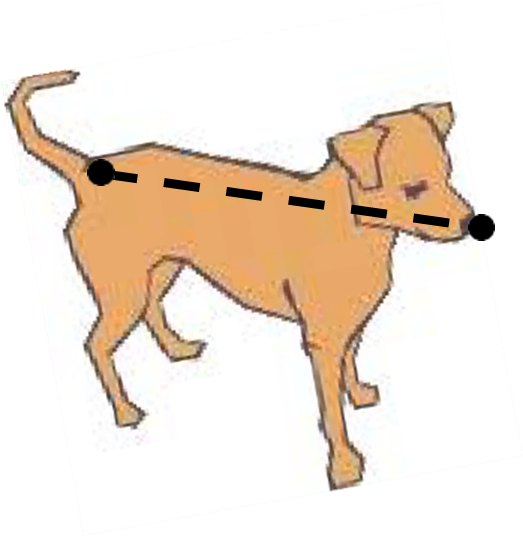IG015: Michigan State University Dog Exercise and Housing Policy
IACUC Guideline Number: IG015, Approved By: CAR, Approval Date: 2/9/2023, Version: 2
Michigan State University’s Institutional Animal Care and Use Committee (IACUC) and the Attending Veterinarian have adopted the following policy to clarify the regulatory responsibilities of the institution and to outline the minimally acceptable standards for providing appropriate socialization and exercise for canines used in research.
Animal Welfare Regulations § 3.8 (https://www.ecfr.gov/current/title-9/chapter-I/subchapter-A/part-3/subpart-A)
“…research facilities must develop, document, and follow an appropriate plan to provide dogs with the opportunity for exercise... The frequency, method, and duration of the opportunity for exercise shall be determined by the attending veterinarian and, at research facilities, in consultation with and approval by the Committee.”
All facilities housing research or teaching dogs must adhere to the minimum standards established in this policy. The specific mechanisms or activities performed to comply with this policy may be facility-specific, which must be documented with an IACUC-reviewed standard operating procedure (SOP).
All dogs in MSU facilities are housed in rooms or pens that fulfill or exceed requirements specified by
- Animal Welfare Act/Regulations: Part 3-Standards, Subpart A (Specifications for the Humane Handling, Care, Treatment, and Transportation of Dogs and Cats)
- Sec. §3.6 Primary enclosures
- Sec. §3.8 Exercise for dogs
Required Floor Space
 The Animal Welfare Regulations considers the floor space provided to the dog(s) as a factor in determining the requirements for exercise. The minimum required floor space is based on the dog’s body length which is measured in inches—as a straight line from the tip of the nose to the base of the tail. The floor space of a cage or run is measured in sq ft. Enclosures must be 6 inches taller than the height of the tallest dog in the enclosure when standing in normal posture.
The Animal Welfare Regulations considers the floor space provided to the dog(s) as a factor in determining the requirements for exercise. The minimum required floor space is based on the dog’s body length which is measured in inches—as a straight line from the tip of the nose to the base of the tail. The floor space of a cage or run is measured in sq ft. Enclosures must be 6 inches taller than the height of the tallest dog in the enclosure when standing in normal posture.
| Body Length (in.) | Floor Space (sq. ft.) per dog |
|---|---|
| 12 | 2.3 |
| 15 | 3.1 |
| 18 | 4.0 |
| 21 | 5.1 |
| 24 | 6.3 |
| 27 | 7.6 |
| 30 | 9.0 |
| 33 | 10.6 |
| 36 | 12.3 |
Group housing of dogs will require the full floor space required for each dog individually. The table is a summary of required floor space based on length of nose – to – tail base.
NOTE: Exercise is required for individually housed dogs maintained in runs that provide less than twice the minimum floor space needed for an individual dog (AWR § 3.8 (a)). Further, forced exercise methods or devices such as swimming, treadmills, or carousel-type devices are unacceptable for meeting the exercise requirements of this section.
The Guide for the Care and Use of Laboratory Animals: Eighth Edition (p.59) (http://www.nap.edu/catalog/12910.html) provides the following guidance for housing, with the caveat that enclosures are of a height that is sufficient for the animals to comfortably stand erect with their feet on the floor.
| Body Weight (kg) | Floor Space (sq. ft.) per dog |
|---|---|
| <15 kg | 8.0 |
| Up to 30kg | 12.0 |
| >30 kg | > 24.0 |
- Vivarium dogs are group housed, by default, according to size, age, gender,
- Singly housed dogs will have a sign on their cage indicating the reason for this arrangement (e.g., dog aggression, observation needs, veterinary clinical concerns, protocol requirements). Dogs that do not share their food nicely are separated at feeding time (s) and then reunited with the group
- Exercise requirements for dogs are met by the size of the rooms or pens. In addition, they receive positive interactions with caretakers when husbandry procedures are performed (when they are taken to a new clean run or room), and when they are given enrichment items. They are also provided with dog toys, they may go out to the outside exercise yards, and they may be walked by a member of the “Walks and Wags” club or may be part of a teaching class involving non-invasive procedures involving lots of hands-on participation by Veterinary students. The dogs are also given extra attention during physicals, with grooming and baths
- The following dogs do not require specific exercise periods:
- Dogs housed individually in 200% of their required space needs
- Grouped housed dogs in runs that provide 100% of the required space for each dog individually
- Puppies less than 12 weeks old
- Mothers with pre-weaned litters
Exemptions
There are two (2) scenarios by which an exemption to the dog exercise or socialization requirements may be administered (AWR 3.8(d)) (https://www.ecfr.gov/current/title-9/chapter-I/subchapter-A/part-3/subpart-A):
- The Attending Veterinarian or designee may exempt a dog from exercise or socialization because of their health, condition, or well-being. Veterinary-based exemptions must be documented in the animal’s clinical record and must be reviewed and updated at least every 30 days by the Attending Veterinarian or
- The Principal Investigator justifies that the scientific objectives of the project conflict with the provision of exercise or socialization. Research-related exemptions must be documented in an approved exemption “form” and must be reviewed not less than annually (linked with the annual continuing review).

